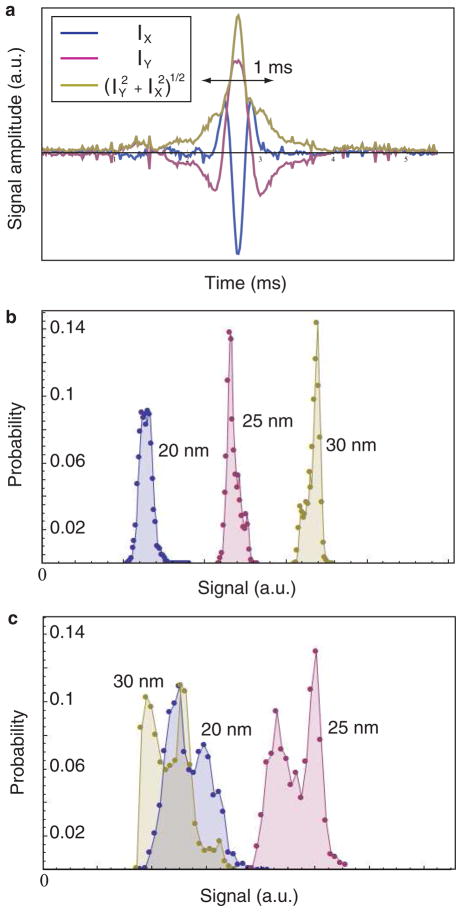Fig. 2.
Immobilized particle detection using dual-phase interferometry. (a) Time series of a detection event for a 30 nm radius immobilized Au particle in water. The event time is determined by the particle speed and the size of the laser focus, and the time resolution is determined by the data acquisition speed (50k samples/sec). (b), (c) Histograms of signals for 20 nm (blue), 25 nm (pink) and 30 nm (yellow) radius Au nanoparticles immobilized on glass and immersed in water. In (a), the dual-phase scheme is used, and the signal is the area under the particle event peak. In (c), the intensity from a single detector is taken after background subtraction for the same data set, and the histogram is constructed from the maxima of the peaks, imitating homodyne interferometry. The inherent phase dependence leads to wider peaks, and happens to give a smaller apparent signal from the largest particle in this case. Scott’s choice was used to determine bin widths for all histograms.

